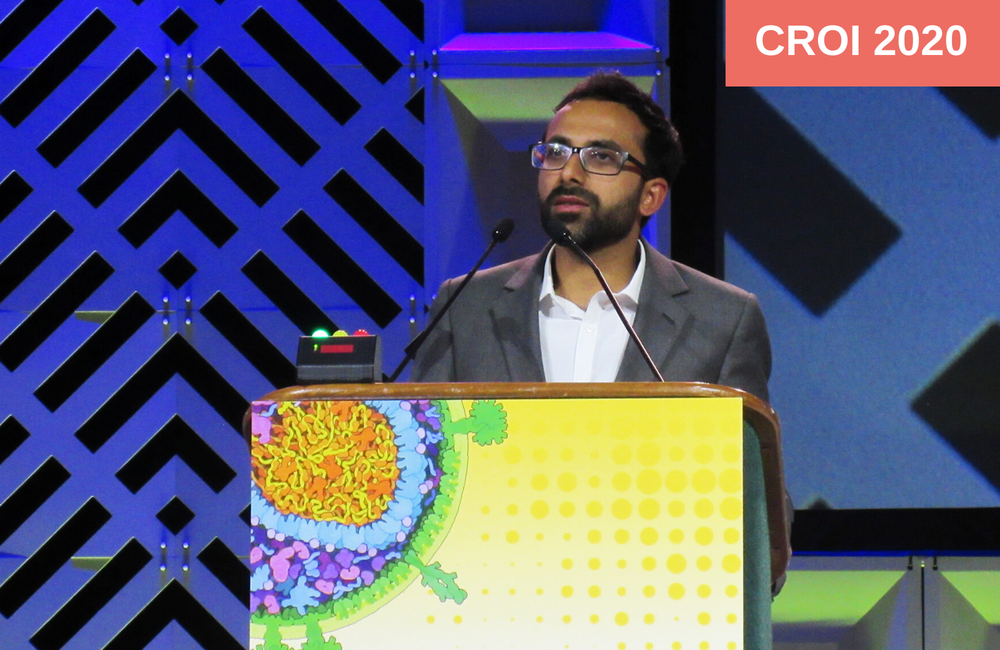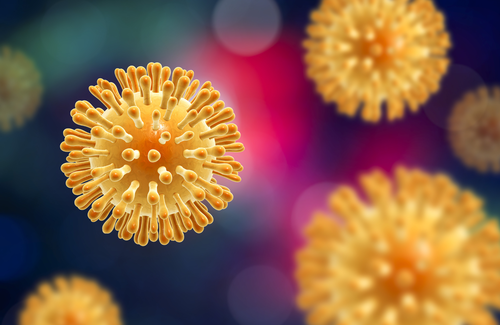
A London man continues to have no detectable HIV 30 months after stopping antiretroviral therapy, according to a report at the Conference on Retroviruses and Opportunistic Infections (CROI 2020). Research is being presented virtually this week after the in-person meeting in Boston was cancelled due to the coronavirus crisis.
In 2016, the man underwent a bone marrow transplant to treat lymphoma using stem cells from a donor with natural resistance to HIV. Since he stopped treatment, researchers have been unable to find functional HIV in his blood, semen, lymph nodes, gut tissue or cerebrospinal fluid.
Professor Ravindra Gupta of University College London first presented the case at last year's CROI. At that point, the man had been free of detectable virus for 18 months following his treatment interruption. Yesterday the New York Times revealed that the man, Adam Castillejo, had decided to go public as the 'London patient'.
"My message to everyone out there living and coping with HIV is to not give up hope," Castillejo told aidsmap.com. "I do hope that me going public will give some encouragement and empower people to keep breaking the stigma associated with HIV."
Last year, Gupta said that after two or three years without detectable virus, it would be appropriate to talk about a cure, adding that he was "highly confident this will be achieved." And indeed, he told aidsmap.com this week, "After 2.5 years off antiretrovirals and lack of evidence for any active virus, this almost certainly represents cure."
The latest findings strongly suggest that Castillejo has joined Timothy Ray Brown, formerly known as the Berlin patient, as the second person to permanently beat HIV.
Brown received two stem cell transplants to treat leukaemia in 2006. The donor had double copies of an uncommon genetic mutation known as CCR5-delta-32 that results in missing CCR5 co-receptors on T cells, the gateway most types of HIV use to enter cells. He underwent intensive conditioning chemotherapy and radiotherapy to kill off his cancerous immune cells, allowing the donor stem cells to rebuild a new HIV-resistant immune system.
As described at the 2007 CROI, Brown stopped antiretroviral therapy at the time of his first transplant but his viral load did not rebound. Researchers extensively tested his blood, gut, brain and other tissues, finding no evidence of replication-competent HIV anywhere in his body. Brown has now been free of HIV for more than 13 years.
Castillejo was diagnosed with Hodgkin lymphoma in 2011. After five years of gruelling but futile treatment, he underwent a bone marrow transplant in May 2016. Like Brown, he received donor stem cells with a double CCR5-delta-32 mutation. However, he was subjected to less aggressive conditioning chemotherapy and was able to stay on his antiretroviral regimen of dolutegravir, rilpivirine and lamivudine.
Fortunately, the transplant led to complete remission of his lymphoma. About ten weeks after the transplant, he developed mild graft-versus-host disease, a condition in which the newly transplanted immune cells attack the recipient's body.
Post-transplant tests showed that most of his CD4 T cells now lacked CCR5 receptors. Extensive testing of his blood plasma and T cells was unable to detect functional virus. In September 2017, still with no evidence of viable HIV, Castillejo stopped antiretroviral therapy in a closely monitored analytic treatment interruption.
When last tested on 4 March 2020 – 30 months after stopping antiretrovirals – his plasma viral load remained undetectable using an assay with a limit of detection of 1 copy/ml of HIV RNA, Gupta reported in a poster at CROI and in the 10 March 2020 edition of The Lancet HIV.
In addition, viral load was undetectable in his semen and cerebrospinal fluid surrounding the brain and spinal cord. Gut biopsies showed that HIV DNA could not be found in samples from the rectum, sigmoid colon or ileum (part of the small intestine). Tissue from an armpit lymph node tested negative for intact proviral DNA, the genetic blueprint HIV inserts into host cells.
Tests did show "a very low-level positive signal" for HIV DNA in peripheral CD4 memory T cells at 28 months, but these bits of genetic material are thought to essentially be "fossils" that cannot trigger active viral replication.
HIV-specific CD4 and CD8 T-cell responses remained absent at 27 months. HIV-specific antibody levels are low and continue to fall, suggesting the remnant bits of virus are not stimulating an immune response. Castillejo's CD4 cell recovery has been somewhat slow, last measured at 430 cells/mm3, which could be due to lingering effects of chemotherapy or a lengthy duration of untreated HIV before starting antiretroviral therapy.
Based on mathematical modelling, Gupta and colleagues calculated that the probability of "remission for life" is 99% if at least 90% of HIV-susceptible cells retain the donor's CCR5-delta-32 mutation, known as chimerism. When last tested, chimerism was maintained in 99% of Castillejo's peripheral T cells, suggesting that a cure is "almost certain."
However, in an accompanying editorial, Dr Jennifer Zerbato and Professor Sharon Lewin, of the Doherty Institute in Melbourne took a more cautious stance, writing, "The additional data provided in this follow-up case report is certainly exciting and encouraging but, in the end, only time will tell."
Experts caution that even if CCR5-delta-32 stem cell transplantation does lead to a functional cure, this high-risk procedure will not be an option for people with HIV who do not need the treatment for cancer. However, researchers are working on several approaches to mimic the same effect by using gene therapy to delete CCR5 receptors from an individual's own T cells or stem cells that give rise to immune cells.
Gupta RK et al. Sustained HIV remission in the London Patient: the case for HIV cure. Conference on Retroviruses and Opportunistic Infections, abstract 346LB, March 2020.
View the abstract on the conference website.
View the poster on the conference website.
Gupta RK et al. Evidence for HIV-1 cure after CCR5Δ32/Δ32 allogeneic haemopoietic stem-cell transplantation 30 months post analytical treatment interruption: a case report. The Lancet HIV, online ahead of print, March 2020.

